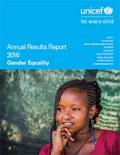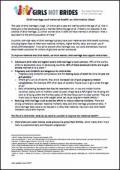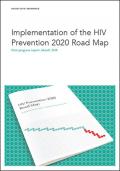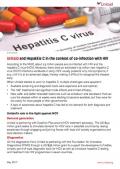What's New
Displaying results 2061 - 2070 of 4907

Resource | Fact Sheets,
In June 2017, there were 1,013 new HIV antibody sero-positive individuals reported to the HIV/AIDS & ART Registry of the Philippines (HARP). Eighty-eight percent of those were asymptomatic at the time of reporting.
Most (93%) were male. The median age was 27 years old (age range: 1 to 73 years). Half of the cases were from the 25-34 year age group while 32% were youth aged 15-24 years.

Resource | Publications,
UNICEF's Strategic Plan 2014–2017 guides the organization’s work in support of the realization of the rights of every child. At the core of the Strategic Plan, UNICEF's equity strategy – which emphasizes reaching the most disadvantaged and excluded children, caregivers and families – translates this commitment to children’s rights into action.
The following report summarizes how UNICEF and its partners contributed to gender equality and the empowerment of girls and women in 2016 and reviews the impact of these accomplishments on children and the communities in which they live.

Resource | Publications,
Gender Responsive Budgeting (GRB) is budgeting that integrates a gender perspective, and tracks how budgets respond to gender equality and women’s rights requirements. The use of gender responsive budgeting in the HIV response can facilitate equality and fairness in terms of HIV budget allocations and expenditures to ending the HIV epidemic, while also increasing transparency, accountability and efficiency. The emphasis on HIV budget allocations and expenditures is crucial, as inadequate funding hinders governments and other relevant actors from successfully implementing any policy or program.

Resource | Guidelines,
The primary purpose of this Guidance on Gender Responsive Budgeting (GRB) for the HIV response in Asia and the Pacific is to offer top management, national planners, and civil society organizations a resource on how to integrate gender equality into HIV policy and planning. The note is based on a paper prepared for UN Women on Applying GRB to the HIV Responses: A Case Study of Cambodia, Indonesia, and Thailand, and serves as a stand-alone framework for applying gender responsive budgeting to HIV policies and programming.
UN Women recommends using GRB methodology in the HIV response as this approach can facilitate equality and fairness in terms of HIV budget allocations and expenditures, while also increasing transparency, accountability and efficiency of public funds that aim to reverse and eventually end the HIV epidemic in Asia and the Pacific.

Resource | Publications,
Schools should be safe places for everyone. But in the Philippines, students who are lesbian, gay, bisexual, and transgender (LGBT) too often find that their schooling experience is marred by bullying, discrimination, lack of access to LGBT-related information, and in some cases, physical or sexual assault.
This report documents the range of abuses against LGBT students in secondary school. It details widespread bullying and harassment, discriminatory policies and practices, and an absence of supportive resources that undermine the right to education under international law and put LGBT youth at risk.

Resource | Fact Sheets,
Written by Girls Not Brides, this information sheet takes a look at the link between child marriage and maternal health. It highlights that countries with high rates of child marriage typically have poor maternal and child health outcomes including higher rates of infant and maternal mortality. The brief also looks at what can be done to improve the maternal health of adolescent girls.

Resource | Publications,
While child marriage is widely considered a human rights issue closely connected to gender inequality, the significance of the practice’s impacts at both the individual and societal levels suggests that ending child marriage may play an important role in alleviating poverty and in promoting economic development. To date, however, there has been relatively little in the way of rigorous assessment of the economic impacts of child marriage or how much child marriage may "cost" countries and societies.
This brief summarizes results from an analysis of the impacts of child marriage on a few selected health outcomes, specifically early childbirths, maternal mortality and intimate partner violence. It does not include analyses for other aspects of women’s health that are likely to be affected by child marriage to various extents, such as maternal morbidity, obstetric fistula, female genital mutilation/cutting, sexually-transmitted infections (including HIV and AIDS) and psychological well-being.

Resource | Publications,
The New York Declaration for Refugees and Migrants is an important reaffirmation by Heads of State and Government and High Representatives of their intention “to fully protect the human rights of all refugees and migrants, regardless of status”. A key outcome of the Declaration is the creation of two new Global Compacts, one on refugees and one on migrants. These Global Compacts, to be agreed by government representatives at the United Nations (UN) in 2018, will articulate common commitments in respect of the protection of refugees and migrants.
This working document by the Initiative for Child Rights in the Global Compacts, a multilateral initiative supported by 26 organizations, sets out what these protection and inclusion measures entail with respect to six priority issues involving refugee and migrant children (sometimes referred to collectively as “children on the move”) and what provisions it would consequently be appropriate to include in the two Global Compacts.

Resource | Publications,
This first progress report shows that members of the Global HIV Prevention Coalition have mobilized around strengthening HIV primary prevention. There are clear signs of renewed political commitment and strengthened institutional arrangements for planning and managing prevention programmes. Most member countries have moved fast to develop HIV prevention action plans, and there are many examples of excellent and innovative new initiatives. Furthermore, interest in the HIV prevention agenda and the Global HIV Prevention Coalition is growing. A global accountability process has been set up, with score cards that track progress across a range of high-priority prevention programme areas.

Resource | Publications,
According to the WHO, about 2.3 million people are co-infected with HIV and the hepatitis C virus (HCV). Moreover, there were an estimated 1.75 million new hepatitis C virus (HCV) infections worldwide in 2015. HCV usually presents only mild symptoms, if any, until it is at an advanced stage, thereby making it difficult to recognize the disease early.





